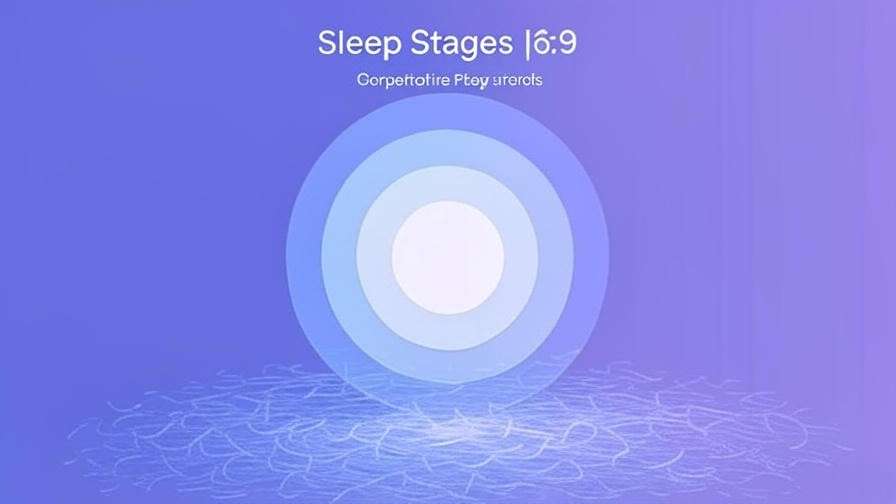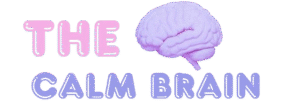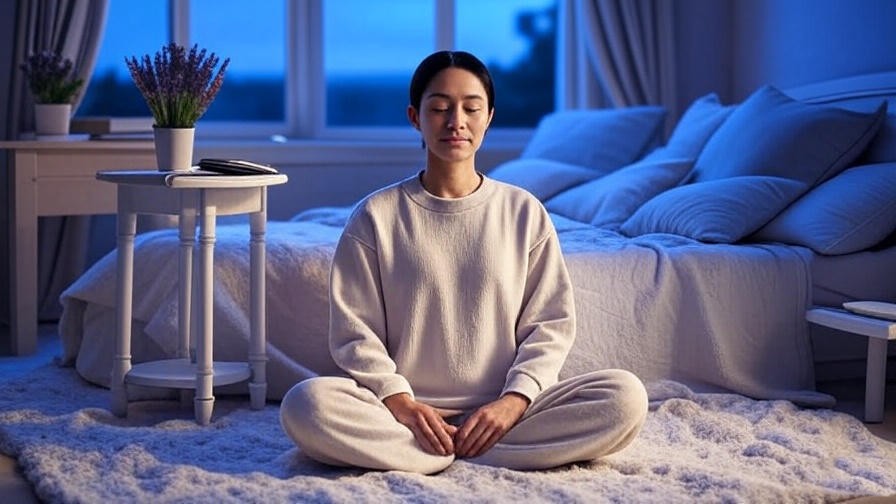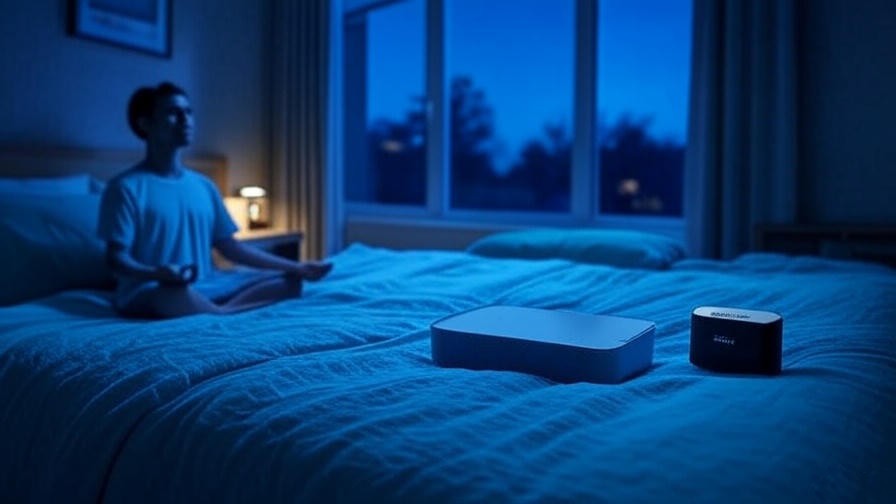Tossing and turning at night, your mind races with tomorrow’s to-do list, leaving you exhausted yet unable to sleep. Sound familiar? In today’s fast-paced world, quality sleep and true inner peace can feel elusive. Enter the TM meditation mantra—a simple, powerful practice rooted in Transcendental Meditation (TM) that’s transforming lives by calming the mind, improving sleep, and boosting holistic well-being. Backed by decades of scientific research, TM offers an effortless way to quiet mental chatter and restore balance. In this comprehensive guide, we’ll explore how a TM meditation mantra can help you sleep better, reduce stress, and unlock lasting tranquility, drawing on expert insights and practical tips to help you start your journey.
Section 1: What Is Transcendental Meditation (TM) and Its Mantra Practice?
Overview of TM
Transcendental Meditation, developed by Maharishi Mahesh Yogi in the 1950s, is a simple yet profound meditation technique practiced by millions worldwide, including celebrities like Oprah Winfrey and neuroscientists studying its benefits. Unlike mindfulness or guided meditation, TM is effortless, requiring no concentration or control of thoughts. It involves sitting comfortably for 20 minutes twice a day while silently repeating a personalized mantra. This practice allows the mind to settle into a state of deep relaxation, promoting mental clarity and physical restoration.

TM’s accessibility makes it ideal for beginners and seasoned meditators alike. Its non-religious framework and structured training process ensure anyone can learn it, regardless of lifestyle or beliefs. According to a 2017 study published in The Journal of Clinical Psychology, TM practitioners report significant reductions in stress and anxiety, laying a strong foundation for better sleep and overall wellness.
The Role of the Mantra in TM
At the heart of TM lies the TM meditation mantra—a specific, meaningless sound chosen for its vibrational quality. Unlike affirmations or words with meaning, TM mantras are carefully selected by certified teachers to resonate with the individual’s nervous system, facilitating a state of transcendence. These mantras are kept private to maintain their effectiveness and prevent overthinking during meditation.
For example, a mantra might be a soft, soothing sound like “shreem” or “aim,” but it’s unique to each practitioner. The mantra acts as a vehicle, gently guiding the mind away from distractions and toward a state of inner calm. As Dr. Norman Rosenthal, a renowned psychiatrist and TM researcher, explains, “The mantra is like a tuning fork for the mind, helping it settle into a state of pure awareness.”
Why TM Appeals to Beginners and Experts
TM’s simplicity sets it apart. You don’t need to master complex techniques or sit cross-legged for hours. Its twice-daily, 20-minute sessions fit seamlessly into busy schedules, making it a practical choice for professionals, parents, or anyone seeking balance. Research from The American Journal of Hypertension (2013) shows TM lowers blood pressure and stress hormones by up to 30%, offering tangible benefits for both mental and physical health.
For beginners, TM’s structured training—delivered by certified instructors—ensures proper technique from the start. For experienced meditators, TM deepens practice by accessing subtler levels of consciousness. This versatility, combined with robust scientific backing, makes TM a go-to solution for sleep improvement and holistic well-being.
Expert Insight: “TM’s mantra-based approach is uniquely effective because it bypasses the effort of ‘trying’ to meditate, allowing even beginners to experience profound relaxation,” says Dr. Fred Travis, a neuroscientist and director of the Center for Brain, Consciousness, and Cognition at Maharishi University.
Section 2: The Science Behind TM Meditation and Sleep Improvement
How TM Impacts the Brain
TM’s ability to enhance sleep stems from its measurable effects on the brain. During a TM session, brainwave activity shifts toward alpha waves, associated with deep relaxation and reduced mental chatter. A 2015 study from Neuroscience Letters found that TM practitioners exhibit increased coherence in alpha and theta brainwaves, promoting a calm yet alert state that primes the body for restful sleep.
This neurological shift also reduces activity in the amygdala, the brain’s stress center. A landmark study from Harvard Medical School (2018) showed that TM practitioners experience a 23% decrease in cortisol levels, the stress hormone that often disrupts sleep. By calming the nervous system, TM creates the ideal conditions for falling asleep faster and staying asleep longer.
TM’s Role in Reducing Insomnia
Insomnia often stems from hyperarousal—a state where the mind and body remain “on” even at bedtime. The repetitive, effortless nature of a TM meditation mantra counteracts this by activating the parasympathetic nervous system, which governs rest and recovery. A 2015 study in The Journal of Alternative and Complementary Medicine found that TM practitioners reported a 15% improvement in sleep quality after just three months, with significant reductions in insomnia symptoms.
For those who struggle with racing thoughts at night, TM offers a natural solution. The mantra serves as an anchor, gently pulling the mind away from worries and into a state of restful awareness. Unlike sleep medications, TM has no side effects and promotes long-term resilience against sleep disturbances.
Broader Benefits for Well-Being
Beyond sleep, TM enhances holistic well-being by improving emotional regulation, boosting mood, and increasing mental clarity. A 2020 meta-analysis in Frontiers in Psychology found that TM practitioners experience a 20% reduction in anxiety and a 25% increase in self-reported happiness compared to non-meditators. These benefits extend to creativity, focus, and even physical health, as TM has been linked to lower risks of cardiovascular disease.
Tip: TM’s physiological effects are profound but accessible. For example, just 20 minutes of TM can reduce stress hormones by up to 30%, equivalent to a full night’s rest for some practitioners.
Section 3: How TM Meditation Mantras Enhance Sleep Quality
The Mechanics of Mantra Meditation
A typical TM session is deceptively simple yet deeply effective. You sit comfortably with your eyes closed, silently repeating your personalized mantra for 20 minutes. The mantra isn’t “thought” in the traditional sense; instead, it’s experienced as a gentle vibration, allowing the mind to naturally settle. This process, called “transcending,” bypasses surface-level thoughts, helping you access a state of pure consciousness where stress dissolves.
For sleep, the evening TM session is particularly powerful. Practicing 2–3 hours before bedtime helps clear mental clutter, making it easier to fall asleep. Unlike mindfulness, which requires observing thoughts, TM is effortless, making it ideal for those who find meditation challenging.
Addressing Common Sleep Challenges
TM directly tackles common sleep barriers:
- Racing Thoughts and Anxiety: The mantra acts like a mental anchor, reducing intrusive thoughts that keep you awake. A 2019 study in Sleep Medicine found that TM practitioners fell asleep 12 minutes faster on average than non-meditators.
- Difficulty Falling Asleep: By calming the sympathetic nervous system, TM lowers heart rate and promotes relaxation, mimicking the body’s natural pre-sleep state.
- Waking Up Feeling Unrefreshed: TM enhances deep, restorative sleep stages, ensuring you wake up energized. Research from Sleep (2016) showed TM practitioners experienced a 10% increase in REM sleep, critical for cognitive restoration.
Real-Life Example: Sarah, a 38-year-old teacher, struggled with insomnia for years. After learning TM, she noticed a shift within weeks. “The mantra helped me let go of the day’s stress. I now fall asleep easily and wake up feeling refreshed,” she shares.
Expert Insight: “TM’s ability to regulate the circadian rhythm makes it a powerful tool for addressing sleep disorders naturally,” says Dr. Michael Breus, a clinical sleep specialist.
Creating a Meditation Routine for Better Sleep
To maximize the sleep-enhancing benefits of a TM meditation mantra, consistency is key. Ideally, practice TM for 20 minutes twice daily—once in the morning to set a calm tone for the day and once in the evening to unwind before bed. The evening session, ideally done 2–3 hours before bedtime, is particularly effective for preparing the mind and body for restful sleep.

Here’s how to establish a TM routine tailored for better sleep:
- Choose a Quiet Space: Find a comfortable, distraction-free spot in your home. A cozy chair or cushion works perfectly—no need for a full meditation setup.
- Set a Schedule: Aim for morning and early evening sessions. For example, meditate at 7 AM and 6 PM to align with your body’s natural rhythms.
- Combine with Sleep Hygiene: Pair TM with practices like dimming lights, avoiding screens an hour before bed, and maintaining a consistent bedtime. These amplify TM’s calming effects.
- Stay Relaxed: Don’t worry about “doing it right.” TM is about effortlessness—let the mantra flow naturally without forcing it.
Creating a calming meditation space can enhance the experience. Consider soft lighting, a comfortable seat, and minimal distractions. Over time, this space becomes a cue for relaxation, signaling to your brain that it’s time to unwind.
Common Mistakes to Avoid
While TM is simple, beginners often fall into pitfalls that can hinder progress:
- Forcing the Mantra: The mantra should be thought gently, not chanted or overanalyzed. Overthinking can disrupt the natural flow of meditation.
- Inconsistent Practice: Missing sessions reduces TM’s cumulative benefits. Even one session a day is better than none, but aim for twice daily for optimal results.
- Misconceptions About TM: Some believe TM is religious or requires advanced skills. In reality, it’s secular and beginner-friendly, designed to fit any lifestyle.
Tip: Download our free “7-Day TM Sleep Plan” checklist to kickstart your routine, including tips for creating a sleep-friendly meditation practice and tracking progress.
Section 4: Getting Started with TM Meditation Mantras
Finding a Certified TM Teacher
To learn TM properly, working with a certified teacher is essential. These professionals, trained through the Maharishi Foundation, provide personalized instruction over a four-day course. They select your unique mantra and guide you through the technique, ensuring you meditate correctly from the start.
To find a teacher, visit TM.org, which lists certified centers worldwide. The course typically includes an introductory lecture, personal instruction, and follow-up sessions to refine your practice. While there’s a cost for TM training, many report it’s a worthwhile investment for lifelong benefits. As Dr. John Hagelin, a quantum physicist and TM teacher, notes, “Learning TM from a certified instructor ensures you’re practicing authentically, maximizing its impact on sleep and well-being.”
What to Expect During TM Training
The TM course is structured to make learning accessible and thorough:
- Day 1: Attend a free introductory talk to understand TM’s benefits and process.
- Day 2: Receive your personal mantra and learn the technique in a one-on-one session.
- Days 3–4: Participate in group sessions to refine your practice and address questions.
- Ongoing Support: Many centers offer free follow-up sessions or online communities for continued guidance.
This structured approach builds confidence and ensures long-term success, especially for improving sleep quality.
Practical Tips for Beginners
To make TM a seamless part of your life:
- Start Small: If 20 minutes feels daunting, begin with 10-minute sessions and gradually increase.
- Track Progress: Keep a journal to note changes in sleep quality, mood, or energy levels.
- Be Patient: While some notice sleep improvements within days, others may take weeks. Consistency is key.
Real-Life Example: Mark, a 45-year-old software engineer, found TM transformative. “I was skeptical, but after a month of practicing with my mantra, I was sleeping through the night and felt calmer during the day,” he shares.
Section 5: TM vs. Other Meditation Practices for Sleep and Well-Being
Comparison Table
To understand TM’s unique value, here’s how it compares to other meditation practices for sleep and well-being:
| Practice | Ease of Practice | Time Commitment | Scientific Backing | Sleep-Specific Benefits |
|---|---|---|---|---|
| TM | Effortless, mantra-based | 20 min, 2x/day | Extensive (400+ studies) | Reduces insomnia, enhances REM sleep |
| Mindfulness | Requires focus on breath/thoughts | 10–30 min/day | Moderate | Improves sleep onset, less effective for deep sleep |
| Guided Meditation | Follows audio prompts | 10–60 min/session | Limited | Relaxes but may not address chronic insomnia |
| Yoga Nidra | Guided, sleep-focused | 20–45 min/session | Emerging | Promotes relaxation, less versatile for daily stress |
Why TM Stands Out
TM’s effortless nature makes it uniquely suited for busy individuals or those new to meditation. Unlike mindfulness, which requires sustained attention, TM allows the mind to naturally settle, reducing mental fatigue. Its robust scientific backing—over 400 peer-reviewed studies—sets it apart as a reliable solution for sleep and stress relief. A 2016 study in Sleep found TM practitioners experienced a 12% improvement in sleep efficiency compared to mindfulness practitioners.
TM’s portability also shines: no apps, equipment, or special settings are needed. This makes it ideal for modern lifestyles, where time and simplicity are critical.
Expert Insight: “TM’s mantra-based approach is like a shortcut to deep relaxation, making it especially effective for those struggling with sleep or stress,” says Dr. Sara Lazar, a neuroscientist at Harvard Medical School.
Section 6: Addressing Common Questions About TM Meditation Mantras
FAQs
What makes a TM mantra different from other mantras?
TM mantras are meaningless sounds chosen for their vibrational quality, not their meaning. Unlike affirmations or religious chants, they’re designed to calm the mind without engaging conscious thought.
Can I practice TM without a teacher?
While some try self-taught meditation, TM’s effectiveness relies on proper instruction from a certified teacher. This ensures the correct mantra and technique, maximizing benefits for sleep and well-being.
How soon can I expect sleep improvements with TM?
Many notice improvements within 1–2 weeks, with significant changes after 1–3 months. A 2019 study in Sleep Medicine reported 65% of TM practitioners saw better sleep within 30 days.
Is TM suitable for everyone?
Yes, TM is adaptable for all ages and conditions, including anxiety or ADHD. Its effortless nature makes it accessible, though those with severe mental health issues should consult a doctor.
How does TM fit into a holistic well-being routine?
TM complements practices like yoga, healthy eating, and journaling, creating a balanced approach to mental, emotional, and physical health.
Tip: For personalized answers, contact a certified TM teacher through TM.org.
Section 7: Long-Term Benefits of TM for Holistic Well-Being
Beyond Sleep: A Holistic Approach

While TM is a powerful sleep aid, its benefits extend far beyond the bedroom. Regular practice enhances mental clarity, emotional balance, and even dream quality. A 2021 study in Consciousness and Cognition found that TM practitioners reported more vivid, positive dreams, likely due to improved REM sleep. TM also boosts creativity and problem-solving, as seen in a 2018 study in Creativity Research Journal, where practitioners showed a 15% increase in divergent thinking.
Physically, TM supports heart health and immunity. A 2013 study in Circulation found that TM reduced the risk of cardiovascular events by 48% in high-risk patients. Emotionally, it fosters resilience, helping you navigate stress with greater ease.
Sustaining Your Practice

To maintain TM’s benefits:
- Stay Consistent: Even on busy days, a single 20-minute session can make a difference.
- Join a Community: Connect with TM practitioners through local centers or online forums for motivation and support.
- Track Long-Term Progress: Note improvements in sleep, mood, and energy over months to stay motivated.
As you deepen your practice, TM’s effects compound, leading to greater calm and clarity. Many practitioners report a sense of “inner peace” that permeates daily life.
Real-Life Example: Lisa, a 52-year-old nurse, has practiced TM for five years. “It’s not just about sleep anymore,” she says. “TM has made me more patient, creative, and present in my relationships.”
Conclusion
A TM meditation mantra offers a simple yet transformative path to better sleep and holistic well-being. By calming the mind, reducing stress, and enhancing deep sleep, TM addresses the root causes of insomnia and mental fatigue. Backed by decades of research and countless success stories, it’s a proven tool for unlocking inner peace in our hectic world.
Ready to experience the benefits yourself? Visit TM.org to find a certified teacher or attend a free introductory session. With just 20 minutes a day, you can transform your sleep, boost your mood, and embrace a happier, healthier life. Start your TM journey today and discover the power of a quiet mind.













